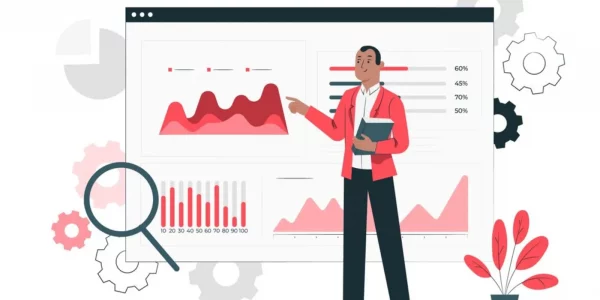In the ever-evolving world of application programming interfaces (APIs), ensuring the seamless operation of these essential connectors is paramount. API error monitoring has become an indispensable aspect of modern software development and maintenance. As we venture into 2024, the significance of detecting API errors is greater than ever before.

In this article, we will delve into the art of detecting API errors in the year 2024, exploring the key indicators, advanced tools, best practices, and even glimpses into the future of this crucial domain.
Key Indicators of API Errors
Unusual Response Times
As the digital landscape continues to evolve, the expectation for near-instantaneous responses from APIs has become the norm. Monitoring response times is crucial to detect anomalies that may indicate API errors. By establishing baseline metrics for response times and recognizing deviations from these benchmarks, organizations can swiftly identify potential issues. Analyzing patterns in response time anomalies provides valuable insights into the health of your APIs.
When response times veer off course, it may signify issues within the API infrastructure, network congestion, or other unforeseen problems. Detecting these irregularities can be the first step in resolving underlying issues before they escalate.
Elevated Error Rates
Another key indicator of API errors lies in the error rates. Calculating error rates, which involve assessing the ratio of unsuccessful API requests to total requests, offers a tangible measure of an API’s performance. Sudden spikes in error rates can be a red flag, signaling potential problems that warrant immediate attention.
Effective detection involves setting thresholds for acceptable error rates and proactively identifying deviations from these thresholds. This ensures that issues are addressed promptly, minimizing their impact on user experience.
Incomplete or Missing Data
Data integrity is at the core of API operations. When data becomes incomplete or goes missing altogether, it can be indicative of underlying errors. Monitoring for data gaps within API responses is a crucial component of error detection.
Detecting these gaps requires a meticulous approach, involving continuous data validation and verification processes. By proactively identifying missing or incomplete data, organizations can maintain data integrity and the trust of their users.
Advanced Tools and Technologies
Machine Learning-Based Detection
In 2024, the use of machine learning for API error detection has reached new heights. Predictive modeling is employed to foresee potential errors by analyzing historical data and identifying patterns. Real-time anomaly detection further enhances error monitoring by instantly flagging irregularities as they occur.
These advanced machine learning techniques not only detect errors but also provide insights for preventive measures, reducing the likelihood of future issues.
Automated Alerting Systems
Timely response to API errors is critical. Automated alerting systems play a pivotal role in this regard by notifying relevant teams when anomalies are detected. Configuring these systems effectively, with customizable alerts and integration into incident management workflows, ensures that issues are addressed promptly, minimizing downtime and user dissatisfaction.
Best Practices for API Error Monitoring
Structured logging is essential for clarity in error monitoring. It allows for organized and consistent data capture, making it easier to trace the source of errors. Additionally, leveraging log aggregation tools centralizes error logs, facilitating efficient analysis and troubleshooting.
Pre-production testing is not enough; organizations must implement ongoing testing in their production environments. This involves the continuous evaluation of APIs to ensure they perform as expected. Monitoring testing environments for potential errors and inconsistencies is crucial to maintaining the quality and reliability of APIs.
To make use of it, you must first:
- Go to Uptimeapicloud and simply click on the button “Start monitoring with 30-day Free Trial” to start using the API.
- After signing up in Uptimeapicloud, you’ll be given your personal Trail. Click on the Monitors option.
- Click on the New Monitor button and add the API details with the API name and URL.
- Once you are done, make the API call by pressing the button “Create” and see the results on your screen.
Here’s the Example:
Conclusion
In conclusion, as we enter 2024, API error monitoring stands as a critical aspect of software development and maintenance. Detecting API errors through key indicators, advanced tools, and best practices is paramount for ensuring seamless user experiences. By embracing the latest technologies and staying ahead of emerging challenges, organizations can pave the way for a future where API errors are proactively identified and swiftly resolved, ultimately benefiting both businesses and users alike.
Here’s the Video Guide:

